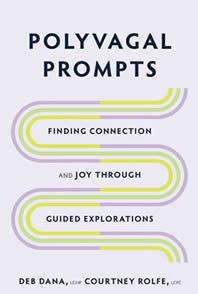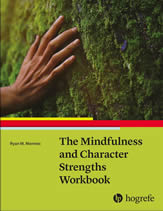On the Mystery of Being: Contemporary Insights on The Convergence of Science and Spirituality
What makes us, us? Is our essence of being reflected through the words we put on the blank spaces after the “I AM” statements? Or, are the “I AM” statements already ample enough to give us an answer to the above? On the Mystery of Being offers a collection of insights towards the above question about the essence of beings. In the form of anthology, the authors put forth their main arguments. By bringing spirit with matter, spirituality with science, non-dualistic with dualistic together, we reflect on a more holistic insight into being—to live in the moment. Moreover, in our journey to find the meaning of our beings, the authors advise us to emphasize “I” instead of paying too much attention to the experiences we have been through. Unlike conventional images in which life is a blank canvas awaiting our experiences to paint them colorful, the book informs us that we are not born empty but filled with potentials and completeness.
Rewiring the Addicted Brain with EMDR- Based Treatment
Rewiring the Addicted Brain with EMDR- Based Treatment is a handbook written for “therapists, substance use counselors, and lay people seeking user-friendly tools to help support themselves in recovery” (pg. x). Parnell offers a descriptive introduction that informs the reader what to expect from the book, how it is organized and a brief summary of each part of the book. One of the unique aspects of the book is that it does not need to be read in order. The author instead suggests finding the chapter that would be most beneficial to the client depending on what they are currently struggling with and equip them with the necessary tools found in that chapter. It is important to note that the author explicitly cautions that EMDR therapy can and should only be practiced by licensed mental health counselors or clinicians who have been trained in this modality. In addition to her attachment focus EMDR approach, Parnell also includes aspects from an EMDR-based technique called Resource Tapping. Tapping in are exercises based on the Resource Tapping technique that non-EMDR therapists and lay people can put into use.
Rethinking Trauma Treatment: Attachment, Memory Reconsolidation, and Resilience
Armstrong’s compassion and astuteness in Rethinking Trauma Treatment sets this scholastic work apart from the current literature on trauma treatment. Armstrong is a stellar writer, both in an academic and a narrative sense, educating the reader while simultaneously arousing feelings of empathy towards the individuals she describes. She presents essential facts in a comprehensive manner; because of her compendious writing style, readers can focus on the book’s content rather than thoughts wandering in their mind.
Feminist Therapy: Second Edition
Feminist Therapy: Second Edition offers some insight into the beginnings of the feminist movement, educating the reader about the various political uprisings that spurred it into motion. Interestingly, there is no one founder of feminist therapy. Similar to a democracy, where the government is formed by and for the people, feminist therapy struggled with defining its boundaries and was left to the interpretation of the clinician practicing it.
Addiction, Attachment, Trauma and Recovery: The Power of Connection
In his recently published book, Addiction, Attachment, Trauma and Recovery: The Power of Connection, Morgan offers a new framework for clinicians working with clients like myself that combines interpersonal neurobiology and social ecology and focuses on addiction and recovery from an attachment-sensitive counseling approach. The soul of addiction, Morgan says, is a lack of connection and belonging. “Recovery,” he writes, ”is a restoration to connection, to meaningful and life-giving relationships” (pg. xxix). The traditional models of addiction—it’s a disease, a choice, a learned behavior—are being replaced by models focused on relational ecologies.
Addiction, Attachment, Trauma, And Recovery: The Power of Connection
Morgan’s book, Addiction, Attachment, Trauma, And Recovery presents a progressive paradigm for the understanding of addiction and clinical practice of its treatment. Embodied firmly within the book and in Morgan’s own practice, is the principle of “consilience”. This is defined as the convergence of insights across a multitude of disciplines to form comprehensive knowledge. Thus, in Addiction, Attachment, Trauma, And Recovery, Morgan links together interpersonal neurobiology, attachment psychology, social ecology and trauma science into an articulate, humanistic analysis of addiction. Consilience is paramount: as we live in a world that is increasingly complex, we require a mode of thinking or framework that is both dynamic and integrative.
Feminist Therapy
As a constituent of the American Psychological Association (APA) Theories of Psychotherapy Series, the second edition of Laura S. Brown’s Feminist Therapy highlights the contemporary model of feminist psychotherapy as well as its history and context. She additionally informs readers how feminist therapy is utilized in practice and evaluates its practicality.
The Routledge International Handbook of Embodied Perspectives in Psychotherapy: Approaches from Dance Movement and...
What do you get when four seasoned academics combine their scholarly resources and put their pens to the page?
An impressive "fertile intersection of fields of inquiry” with a star-studded list of contributors writing about body psychotherapy and dance movement therapy.
Origins
Somatic Movement Educator who has read many books by authors in the field, I felt a quickening and rising in my body and became curious, shyly excited, and a little nervous when invited to review a book by Joan Davis. Davis is among a generation of creative professionals in Ireland and across the UK dedicated their lives to in-depth explorations and research through the silent level (non-words) processes and expressions of the human body. In this very small, yet internationally growing world of somatic movement, Davis is among the “rock stars”, and she has rightfully earned her honor and fame through decades of creative, intellectual, emotional, and spiritual research that she integrated into a training programme called Origins.
Resilience: Powerful Practices for Bouncing Back from Disappointment, Difficulty, and Even Disaster
Linda Graham’s 2018 book, Resilience: Powerful Practices for Bouncing Back from Disappointment, Difficulty, and Even Disaster, is a continuation of the practices she first wrote about in her book, Bouncing Back: Rewiring Your Brain for Maximum Resilience and Well-Being. Throughout each chapter, Graham details exercises aimed to build and strengthen resilience by way of regular practice. Graham divides the book into eight chapters that are designed to guide the reader through a journey of understanding and strengthening resilience.













